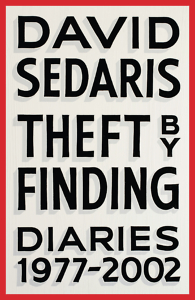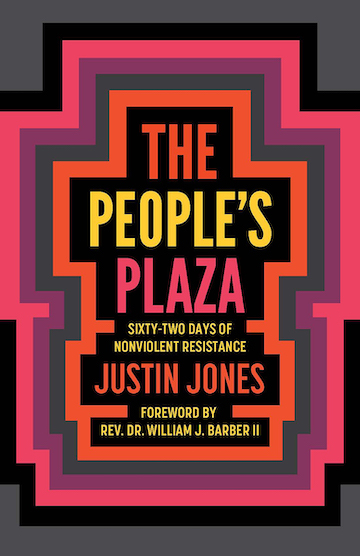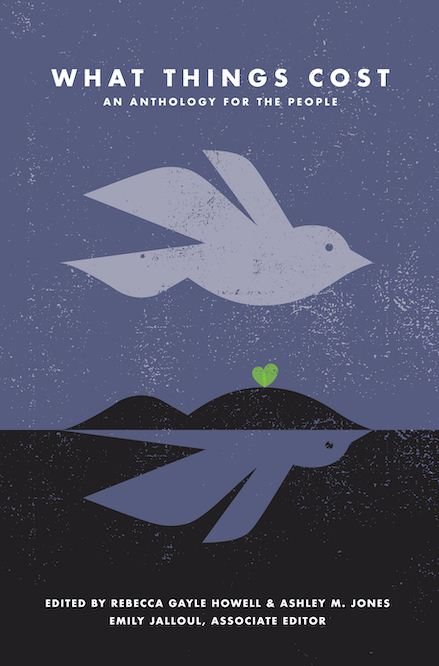One Corner at a Time
Beloved storyteller David Sedaris gives longtime readers a conspiratorial gift
“I stayed up all night and worked on my new story,” David Sedaris wrote in the 1985 journal he kept as an art student. “Unfortunately, I write like I paint, one corner at a time. I can never step back and see the whole picture. Instead I concentrate on a little square and realize later that it looks nothing like the real live object. Maybe it’s my strength, and I’m the only one who can’t see it.” This entry was written more than seven years before Ira Glass tapped Sedaris to record “SantaLand Diaries” for NPR’s Morning Edition; today it’s safe to say that legions of Sedaris fans consider this square-by-square approach to writing a definite strength and not a glitch.

Sedaris has kept a journal for more than forty years. In Theft by Finding: Diaries 1977-2002, he reveals the method to his observational and anecdotal madness. He carries a small notebook and makes notes throughout the day about “remarkable events, … bits of overheard conversation, and startling things people have told me.” The next day, he writes, “I’ll review what I jotted down and look for the most meaningful moment in the previous day, the one in which I felt truly present. It could have been seeing an old friend, or just as likely it could have been watching a stranger eat a sandwich with his eyes closed. (That happened recently, and was riveting.)” From these revisited notes he constructs a journal entry.
The early years of Sedaris’s journal can be bleak, but there is still plenty of evidence that the diarist and beloved essayist are one and the same. “Ronnie and I are at the Broadway Hotel, a cheap and depressing place,” he writes from Portland in 1977. “Scary. There is a real poor and a funky poor. This is the real kind.” An entry from 1981 notes: “Half the people I know have dead animals in their freezers: reptiles, birds, mammals. Is that normal?”
There are also reminders of the darker side of Sedaris’s young adulthood: “Some meth this morning, some now. I think I’ll give the rest away, because after several days and nights it starts to get hairy. I got a lot done, though—made ten valentines, started on a shroud, took some egg crates and attached them to a broiler pan and a great photo of a chicken from The Washington Post. It all came together, all this stuff in my closet.”
From apple-picking in Oregon to life in his home town of Raleigh to school in Chicago to achieving professional success in New York City and beyond, the first twenty-five years of Sedaris’s journal is an honest and revealing portrait-in-fragments that delights on every page. Sedaris doesn’t intend for his diaries to be inhaled cover to cover (“It seems more like the sort of thing you might dip in and out of, like someone else’s yearbook or a collection of jokes”), but fans will find it hard to dip out. On top of the enjoyment of Sedaris’s observations and insights, familiar characters make frequent appearances, and discovering the backstory of well-known essays is its own little thrill.
 An entry from 1990 captures the moment when Sedaris met his longtime partner, Hugh, who figures prominently in his essay collections: “At five I met with Lili, who paid me to help her carry a ladder. We picked it up on Canal Street, at the loft of a guy named Hugh. Hugh is handsome, a nice guy. Gay.” Then, a few months later: “This spring I am, if I’m not mistaken, in love.”
An entry from 1990 captures the moment when Sedaris met his longtime partner, Hugh, who figures prominently in his essay collections: “At five I met with Lili, who paid me to help her carry a ladder. We picked it up on Canal Street, at the loft of a guy named Hugh. Hugh is handsome, a nice guy. Gay.” Then, a few months later: “This spring I am, if I’m not mistaken, in love.”
As an essayist, Sedaris may be sensitive, but very seldom is he sentimental. In his journals he’s free to be a little mushy about his loved ones. Here’s a passage from 1988 about his sister, Amy Sedaris, who had just been selected for the Second City touring company: “They chose six people out of two hundred fifty. Nothing can keep her down…. I’m so proud I’m splitting open with it. She has something extra. Anyone can see it.”
Aside from the insight into Sedaris’s journal process, Theft by Finding reveals something of the way his revision process works, as well. Sedaris’s previously published essays are in some ways the better-developed versions of the side-eyed observations, naked confessions, and affinity for oddball characters and situations that fill his diaries to the brim. But though his personal journals contain the bones of his future writing, they aren’t the seeds. “That’s the thing with a diary,” he writes in the book’s introduction. “In order to record your life, you sort of need to live it. Not at your desk, but beyond it. Out in the world where it’s so beautiful and complex and painful that sometimes you just need to sit down and write about it.”

Kathryn Justice Leache lives Memphis, her hometown. Her life among books has included work as a librarian and stints as a bookseller at Square Books and The Booksellers at Laurelwood. She will soon be working at Novel, an independent bookstore opening in summer 2017 in Memphis.


